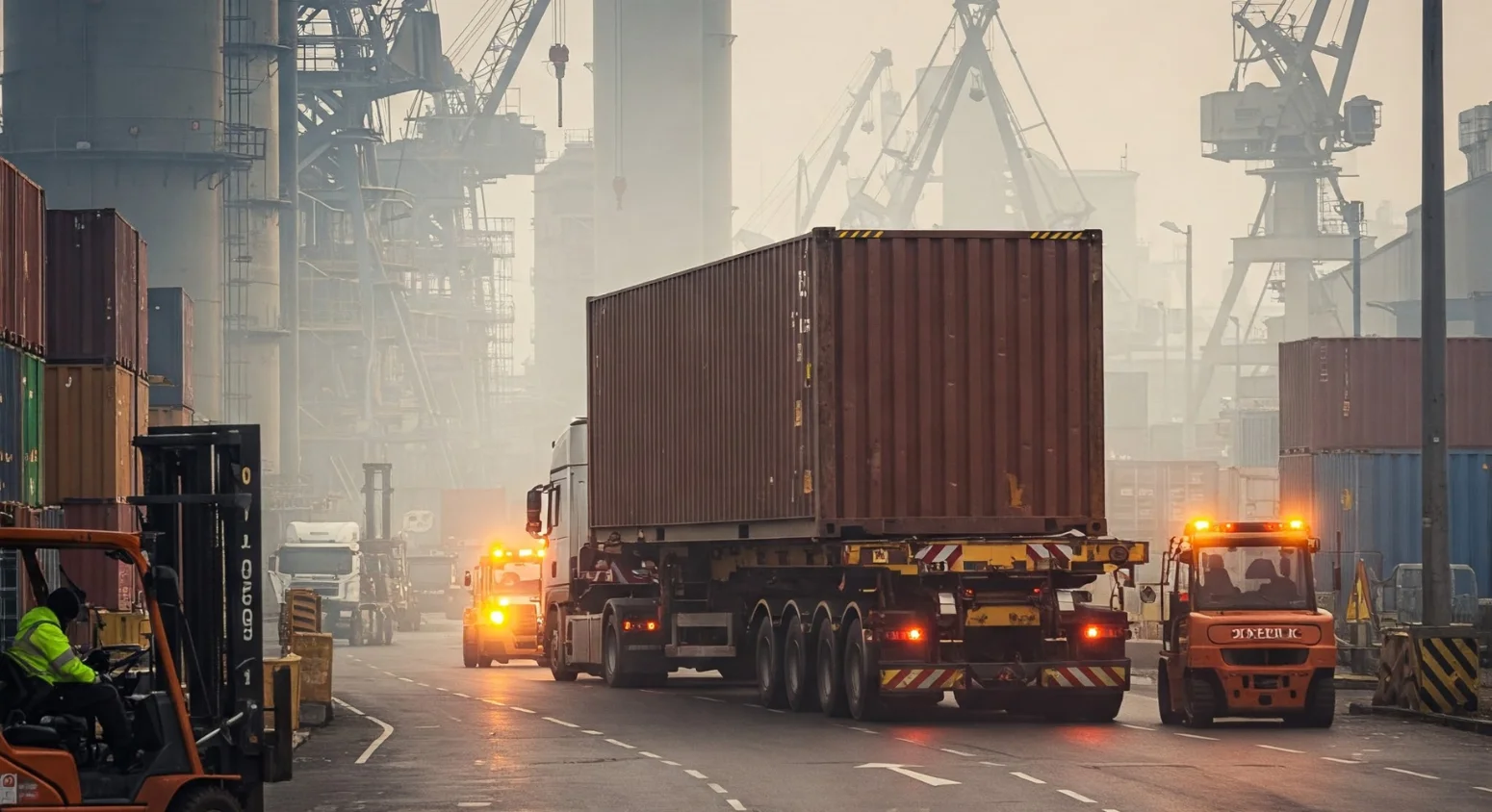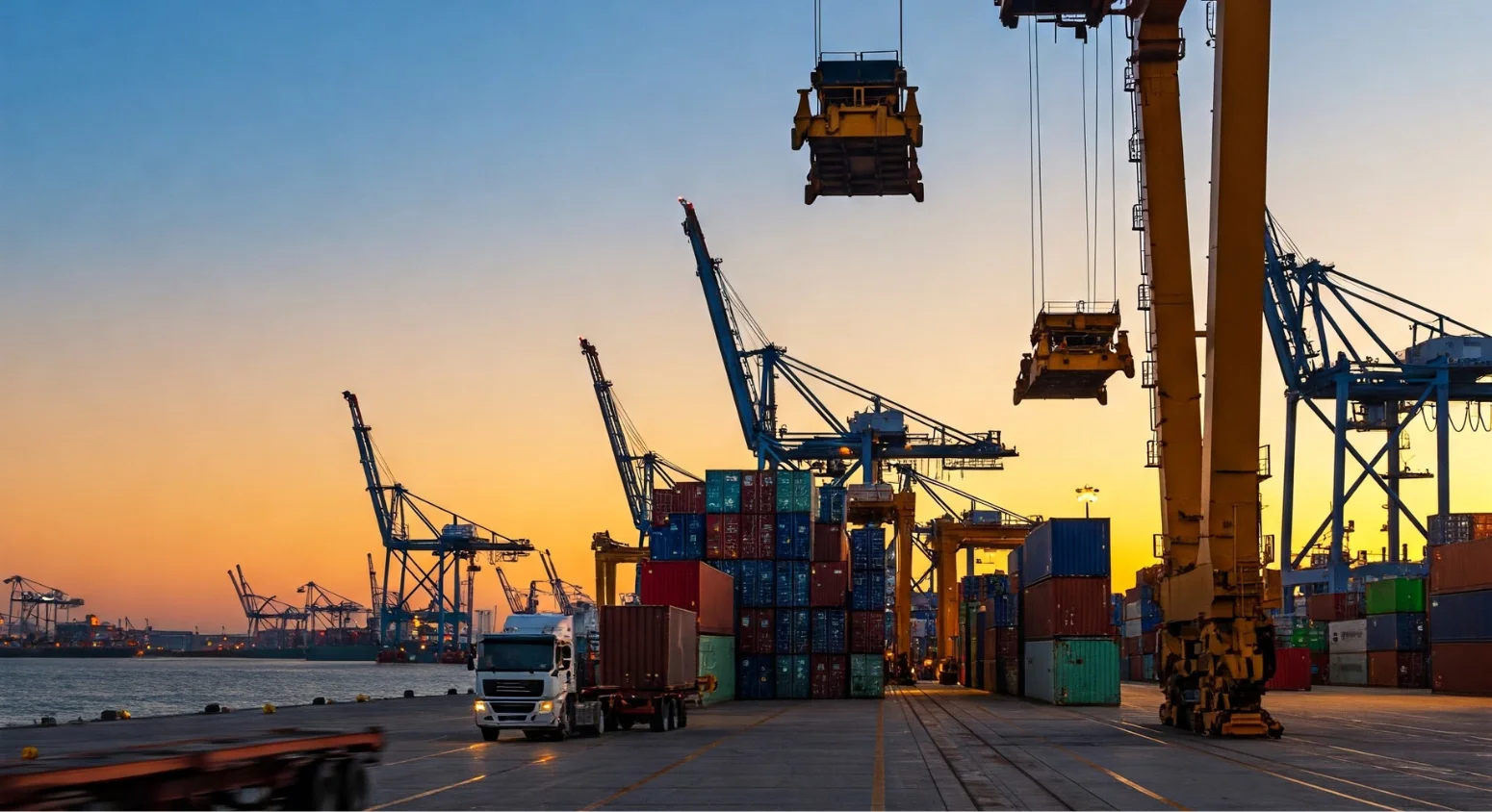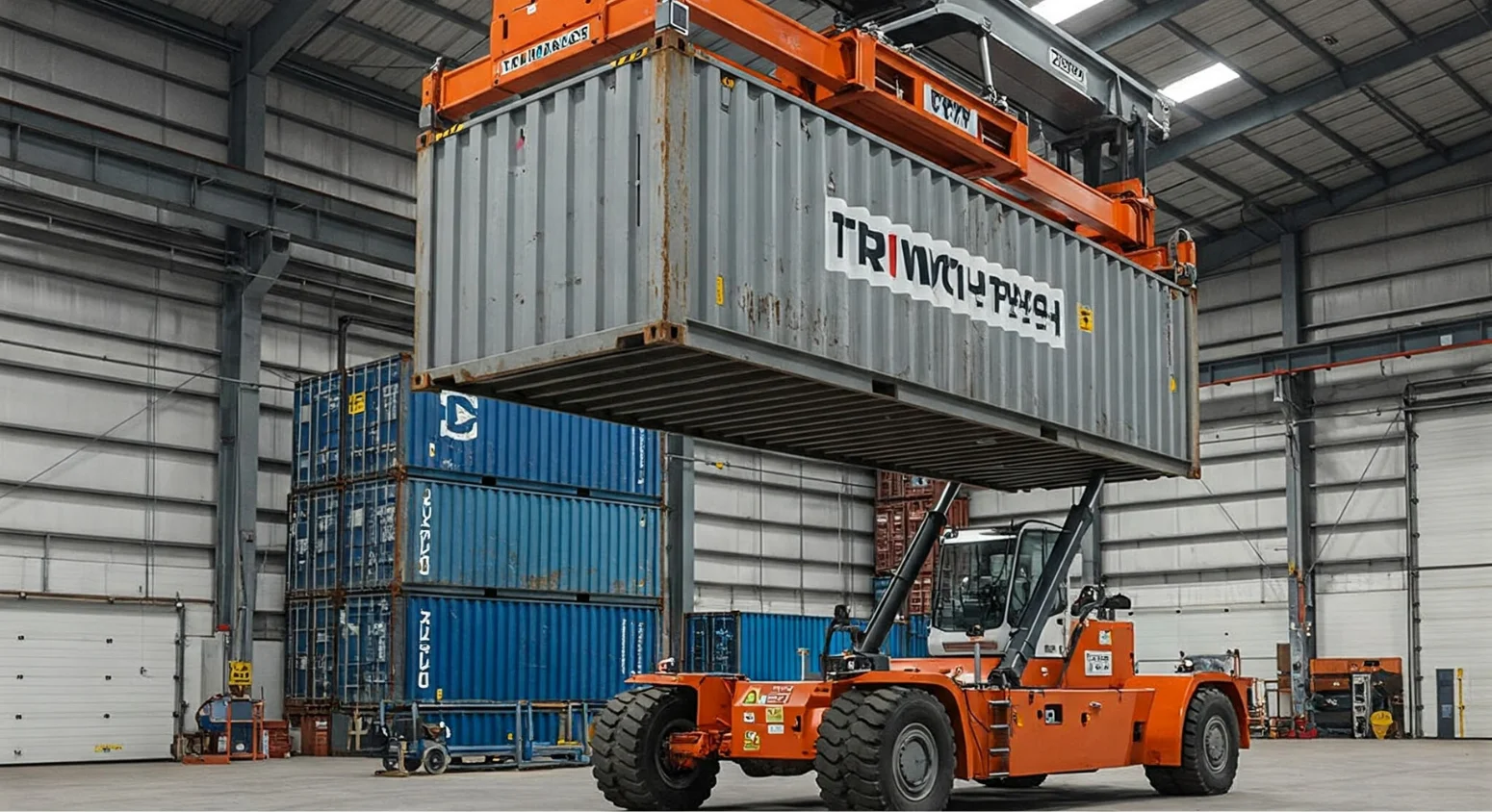Moving oversized containers in high-traffic industrial zones is no small feat. With limited space, constant vehicle movement, and strict safety regulations, one wrong move can disrupt operations and cause costly delays. So, how do you ensure efficiency while keeping safety and compliance in check?
The key lies in strategic planning, the right equipment, and expert execution. Whether you’re managing logistics in a busy port, a large distribution center, or an industrial worksite, choosing the best mobility solutions can make all the difference.
From advanced container lifting systems to precision wheel dollies, having the right tools can streamline operations and enhance productivity.
In this guide, we’ll explore the biggest challenges of moving oversized containers in high-traffic industrial areas and the best strategies to overcome them. You’ll discover how innovative solutions like eco-friendly industrial transportation and modular mobility systems are transforming container logistics—making transport safer, faster, and more cost-effective.
Let’s dive in and uncover the most effective ways to keep your operations moving seamlessly, no matter how demanding the environment.
Table of Contents
Challenges of Moving Oversized Containers in Busy Industrial Areas
Moving oversized containers in high-traffic industrial zones presents a unique set of challenges. With constant vehicle flow, space limitations, and strict safety requirements, navigating these environments requires precision and efficiency.
If not handled correctly, delays, accidents, and operational bottlenecks can become costly setbacks. So, what are the biggest obstacles, and how can you address them?
Traffic Congestion and Safety Concerns
Industrial zones are bustling with trucks, forklifts, and heavy machinery moving in all directions. Adding oversized container transport to the mix increases the risk of collisions and gridlock. To mitigate this:
- Plan movements during off-peak hours to reduce congestion.
- Use designated container transport routes to avoid interfering with regular operations.
- Implement clear communication systems between operators and ground staff to enhance coordination.
Space Constraints and Maneuverability Issues
Tight spaces and narrow passageways make moving large containers particularly difficult. Without the right mobility solutions, repositioning or transporting these units can lead to inefficiencies and even structural damage. The best approach is to Utilize compact yet powerful lifting and moving equipment like wheel dollies for better maneuverability.
Adopt modular mobility solutions that allow for easy adjustments based on space constraints.Train operators on precision handling to navigate tight areas safely.
Compliance with Regulations and Load Limits
Heavy-duty container transportation is subject to strict industrial transport regulations, including weight limits, stacking restrictions, and equipment safety standards. Failure to comply can result in penalties, project delays, or even hazardous situations. To stay aheadEnsure all equipment meets industry safety standards before each move.
Verify container weight distribution to prevent imbalances that could lead to tipping or mechanical failures.Keep up with evolving industrial transport regulations to maintain compliance and avoid costly fines.
Efficiency and Time-Sensitive Operations
In high-traffic zones, every second counts. Delays in moving oversized containers can disrupt workflows, increase labor costs, and affect supply chain efficiency. To optimize productivity:Incorporate real-time tracking systems to monitor transport progress.
Use high-performance lifting and towing solutions to reduce manual handling time.Coordinate with logistics teams to schedule container movements in sync with broader operations.
Overcoming These Challenges with Smart Solutions
Navigating the complexities of oversized container transport in industrial environments requires a mix of strategic planning, the right technology, and specialized mobility equipment. By leveraging eco-friendly industrial transportation methods and advanced lifting systems, businesses can enhance both efficiency and safety.
In the next section, we’ll explore key considerations for safe and efficient oversized container transport, diving into the best practices that ensure smooth operations—even in the busiest industrial settings.
Key Considerations for Safe and Efficient Transport
When moving oversized containers in high-traffic industrial zones, efficiency isn’t just about speed—it’s about precision, safety, and strategic execution. Without the right planning, even the most advanced equipment won’t prevent delays, accidents, or compliance issues. So, what should you prioritize to ensure smooth and secure transport?
1. Selecting the Right Equipment for Oversized Loads
Not all mobility solutions are built for large, heavy-duty containers. Choosing the right lifting, towing, and maneuvering equipment is crucial for both safety and efficiency. Consider:
- LiftWich for stable container lifting, ensuring secure elevation for transport or repositioning.
- HitchWich for seamless towing, allowing industrial vehicles to move oversized containers with precision.
- Wheel Dollies for enhanced maneuverability, perfect for tight spaces and high-traffic environments.
By using purpose-built equipment, you reduce risks, prevent damage, and streamline container movement across busy zones.
2. Planning Routes and Traffic Management Strategies
Industrial sites are constantly in motion, making route planning essential for avoiding congestion and minimizing downtime. To keep transport running smoothly:Map out the most efficient paths with minimal obstructions.Schedule container moves during low-traffic hours to reduce delays.
Implement a traffic control system, ensuring operators and ground teams stay coordinated.Proper planning not only prevents unnecessary bottlenecks but also improves overall operational efficiency.
3. Ensuring Load Stability and Weight Distribution
Oversized containers can become hazardous if not properly balanced. Improper weight distribution increases the risk of tipping, mechanical failures, or accidents. Here’s how to maintain stability:
Verify container weight before transport to ensure compliance with industrial transport limits.Distribute weight evenly to prevent strain on equipment and reduce risks.Use secure fastenings and locking mechanisms to keep containers in place during movement.With proper load balancing, you enhance both safety and the longevity of your transport equipment.
4. Safety Protocols for Operators and Ground Staff
Even the best equipment needs trained professionals behind it. Accidents often occur due to miscommunication or improper handling, making safety protocols a top priority.Train operators on handling oversized loads with specialized mobility equipment.Establish clear communication systems between vehicle drivers, crane operators, and ground teams.
Implement real-time monitoring to detect and address issues before they escalate.A well-trained team, combined with effective mobility solutions, ensures safer, faster, and more reliable container transport.
Building a Smarter, More Efficient Transport System
By focusing on the right equipment, strategic planning, and strict safety measures, you can move multiple containers without unnecessary delays or risks. The next step? Exploring the best equipment options that will revolutionize the way you handle oversized container transport in high-traffic industrial zones.
Best Equipment for Moving Oversized Containers
Choosing the right equipment is the backbone of safe and efficient container transport. In high-traffic industrial zones, where every inch of space and every second of downtime matters, specialized mobility solutions can dramatically improve efficiency.
But with so many options available, which tools offer the best combination of strength, precision, and adaptability?
1. Secure and Stable Lifting Solutions
Lifting oversized containers can be risky without the right support. A stable, controlled lifting mechanism allows operators to safely elevate containers for repositioning, stacking, or loading onto transport vehicles.Prevents instability by distributing weight evenly.Reduces manual labor, increasing productivity and safety.
Compatible with various container sizes, making it a versatile option for industrial transport.When dealing with heavy-duty container lifting, investing in a high-performance lifting solution ensures both safety and efficiency.
2. Efficient Towing for Industrial Vehicles
Need to move multiple containers across a busy industrial site? A secure towing system allows for quick and efficient transport, seamlessly connecting containers to industrial vehicles.Reduces reliance on forklifts and cranes for short-distance moves.Speeds up transportation in high-traffic zones.Enhances maneuverability, even in tight or crowded spaces.
For large-scale operations, a reliable towing solution is a game-changer, ensuring faster and more organized container movement.
3. Enhanced Maneuverability in Tight Spaces
Not every container move involves long distances—sometimes, precision positioning is key. Heavy-duty wheel dollies offer the flexibility needed to navigate congested industrial zones with ease.Increases mobility, especially for containers in compact storage areas.Minimizes floor damage, thanks to smooth, controlled movement.
Reduces the risk of accidents, allowing operators to reposition containers safely.For companies looking to optimize space and movement, these tools are an essential asset.
4. Optimizing Vertical Space for Stacking and Storing
Stacking oversized containers in high-traffic zones can be challenging, especially when space is limited. A safe and efficient lifting system helps maximize vertical storage capacity while maintaining stability.Saves valuable floor space in crowded industrial sites.
Ensures container stability during stacking and unstacking.Reduces reliance on multiple lifting tools, streamlining operations.For industries with limited ground space, vertical stacking solutions enhance storage efficiency while maintaining a safe and organized workspace.
5. Custom Mobility Solutions for Unique Transport Needs
Not all container moves are the same. Some operations require customized mobility solutions to handle specialized container transport. Versatile equipment designed for flexibility can adapt to specific industrial transport challenges.Handles unconventional container shapes and sizes with ease.
Works in combination with other mobility tools for a fully integrated system.Adapts to different load capacities, making it a versatile option for complex transport scenarios.For companies needing bespoke container mobility solutions, customizable equipment ensures seamless handling of unique logistical challenges.
Investing in the Right Equipment for Smarter Container Mobility
Selecting the best equipment isn’t just about lifting, towing, or maneuvering—it’s about optimizing efficiency, safety, and adaptability in high-traffic industrial environments. The right mobility tools can streamline workflows, minimize downtime, and enhance overall productivity.
In the next section, we’ll explore proven strategies to minimize downtime and maximize efficiency, ensuring your container transport operations stay ahead of the curve.
Strategies to Minimize Downtime and Maximize Efficiency
In high-traffic industrial zones, every delay adds up. A single bottleneck in container transport can throw off entire schedules, leading to increased labor costs, missed deadlines, and operational slowdowns. The key to success isn’t just moving containers—it’s moving them faster, safer, and smarter. But how can you minimize downtime while ensuring efficiency?
1. Implement Smart Scheduling for Container Movement
Poor timing is one of the biggest causes of congestion and inefficiency. Without strategic scheduling, container transport can clash with peak operational hours, causing unnecessary delays. To stay ahead,Plan movements during low-traffic periods to reduce congestion.Use real-time tracking systems to optimize transport timing and prevent overlaps.
Coordinate with logistics teams to align container moves with broader operations.By scheduling strategically, you prevent unnecessary interruptions and keep workflows running smoothly.
2. Leverage Modular Mobility Solutions for Faster Handling
Traditional container-moving methods often rely on bulky, labor-intensive equipment that slows down processes. Upgrading to modular mobility solutions provides:Greater flexibility to handle containers of different sizes and weights.Faster repositioning and transport, reducing manual handling time.
Seamless integration with existing equipment, improving overall efficiency.Using compact, high-performance transport tools, such as wheel dollies and precision lifting systems, allows for smoother operations—even in space-constrained industrial zones.
3. Optimize Load Distribution to Prevent Slowdowns
An unbalanced load doesn’t just pose a safety risk—it also slows down transport. Uneven weight distribution can strain equipment, cause mechanical failures, and lead to additional time spent on adjustments. The solution?
- Ensure even weight distribution before transport to avoid shifting loads.
- Use secure fastening systems to keep containers stable.
- Choose the right lifting and moving equipment based on container weight and size.
Proper load management prevents delays, protects equipment longevity, and enhances overall safety.
4. Train Operators for Precision and Speed
Even with the best equipment, efficiency depends on the people handling it. Skilled operators work faster, make fewer errors, and ensure smoother execution. Investing in training means Faster, safer maneuvering in high-traffic environments.Reduced downtime due to operator mistakes or miscommunication.
Improved adaptability when handling complex container movements.By ensuring teams are well-trained in container lifting, towing, and maneuvering, companies can increase productivity without compromising safety.
5. Automate Where Possible to Reduce Manual Effort
Industrial transport is evolving, and automation is playing a bigger role in improving efficiency. Integrating automated lifting, positioning, and tracking systems can:
Speed up loading and unloading times.Reduce reliance on manual labor, minimizing human error.Enhance coordination between teams with real-time data.When combined with eco-friendly industrial transportation methods, automation not only boosts efficiency but also supports sustainable operations.
A Smarter Approach to Container Transport
Reducing downtime isn’t just about moving faster—it’s about working smarter. By combining strategic scheduling, advanced mobility solutions, proper load management, skilled operators, and automation, companies can create a highly efficient, streamlined system for moving oversized containers.
In the next section, we’ll explore real-world applications of these strategies, showcasing how businesses are revolutionizing industrial container mobility with the latest innovations.
Real-World Applications: How Industries Are Revolutionizing Container Mobility
The challenge of moving oversized containers in high-traffic industrial zones isn’t just theoretical—it’s a daily reality for industries worldwide. From manufacturing plants to shipping terminals, companies are transforming their transport processes with innovative mobility solutions.
But what does this look like in action? Let’s explore how different sectors are optimizing efficiency while reducing downtime.
1. Shipping and Logistics: Streamlining Port Operations
Ports are among the busiest industrial environments, with thousands of containers needing to be loaded, unloaded, and repositioned daily. Efficient mobility solutions are essential for keeping operations running smoothly.
High-capacity wheel dollies help reposition containers quickly, reducing crane dependency.Modular towing systems speed up container transfers between loading zones.Automated stacking solutions optimize space, allowing ports to handle more cargo efficiently.By integrating smart scheduling and specialized transport tools, shipping companies can improve turnaround times and minimize costly delays.
2. Warehousing and Distribution: Maximizing Storage Efficiency
In large warehouses, space is a premium resource, and oversized containers must be moved with precision and speed to prevent bottlenecks. Companies are implementing Multi-directional mobility tools to maneuver containers in tight storage areas.
Advanced lifting systems to stack containers efficiently without causing instability.Eco-friendly industrial transportation methods, such as electric-powered dollies, to reduce emissions and operational costs.By optimizing load distribution and storage layouts, warehouses can increase capacity without expanding their footprint.
3. Construction Sites: Handling Heavy-Duty Equipment Safely
Construction projects often involve moving multiple containers filled with materials, machinery, and tools across uneven terrain. To ensure safety and efficiency, companies are using Durable wheel systems that provide stability on rugged surfaces.
High-strength towing attachments for easy relocation of heavy containers.Quick-lift solutions to minimize downtime when repositioning site materials.These mobility solutions enable construction teams to maintain productivity without delays caused by inefficient transport methods.
4. Manufacturing: Reducing Downtime in Production Facilities
In fast-paced manufacturing environments, delays in container movement can disrupt entire production lines. To keep operations seamless, factories are adopting Automated guided vehicles (AGVs) to transport containers between assembly lines.
Flexible container mobility systems to reposition materials without interrupting workflow.Smart load management tools to prevent equipment strain and reduce accidents.By leveraging automation and modular mobility solutions, manufacturers can increase efficiency while maintaining safety standards.
5. Renewable Energy: Supporting Sustainable Transport Solutions
Industries focusing on eco-friendly industrial transportation are making strategic shifts in how they move oversized containers. This includesLightweight, energy-efficient transport systems to reduce fuel consumption.Electric-powered lifting solutions to minimize carbon emissions.
Smart logistics planning to optimize routes and reduce unnecessary transport cycles.By prioritizing sustainable container mobility, companies can align with green initiatives while improving efficiency.
The Future of Industrial Container Transport
Industries are evolving, and so are the methods used to move multiple containers efficiently. Whether it’s through advanced mobility tools, automation, or sustainable solutions, the goal remains the same: reducing downtime, increasing productivity, and enhancing safety.
Conclusion: Moving Containers Smarter, Faster, and Safer
Moving oversized containers in high-traffic industrial zones is no small task. But as we’ve explored, the right strategies and mobility solutions can transform how businesses handle container transport—boosting efficiency, safety, and sustainability.
From smart scheduling and load distribution to advanced lifting and towing systems, every decision impacts overall productivity. Whether you’re in shipping, construction, warehousing, or manufacturing, choosing the right equipment can mean the difference between costly delays and seamless operations.
So, what’s the next step? It’s time to assess your container mobility needs and explore customized transport solutions that fit your industry’s challenges. By embracing innovative tools and strategic planning, you can move multiple containers with confidence—faster, safer, and more efficiently than ever before.
Frequently Asked Questions (FAQs)
1. What is the safest way to move oversized containers in industrial zones?
The safest approach involves using specialized lifting and towing systems designed for heavy loads, ensuring even weight distribution and secure fastening. Wheel dollies and modular mobility solutions also improve maneuverability in tight spaces.
2. How can I reduce downtime when transporting containers?
Minimizing downtime starts with smart scheduling, automated lifting solutions, and efficient load management. Choosing the right equipment for your specific transport needs prevents unnecessary delays.
3. Are there eco-friendly solutions for container transport?
Yes! Many companies are now using electric-powered transport tools and sustainable logistics planning to reduce their carbon footprint. Investing in eco-friendly industrial transportation helps lower emissions while maintaining efficiency.
4. Can I move multiple containers at once?
Absolutely. With the right towing attachments and modular transport systems, multiple containers can be moved simultaneously, significantly improving efficiency in high-traffic industrial environments.
5. What factors should I consider when selecting container mobility equipment?
Consider load capacity, terrain type, operational speed, and compatibility with existing equipment. The goal is to choose solutions that enhance safety, reduce manual labor, and optimize overall transport efficiency.



